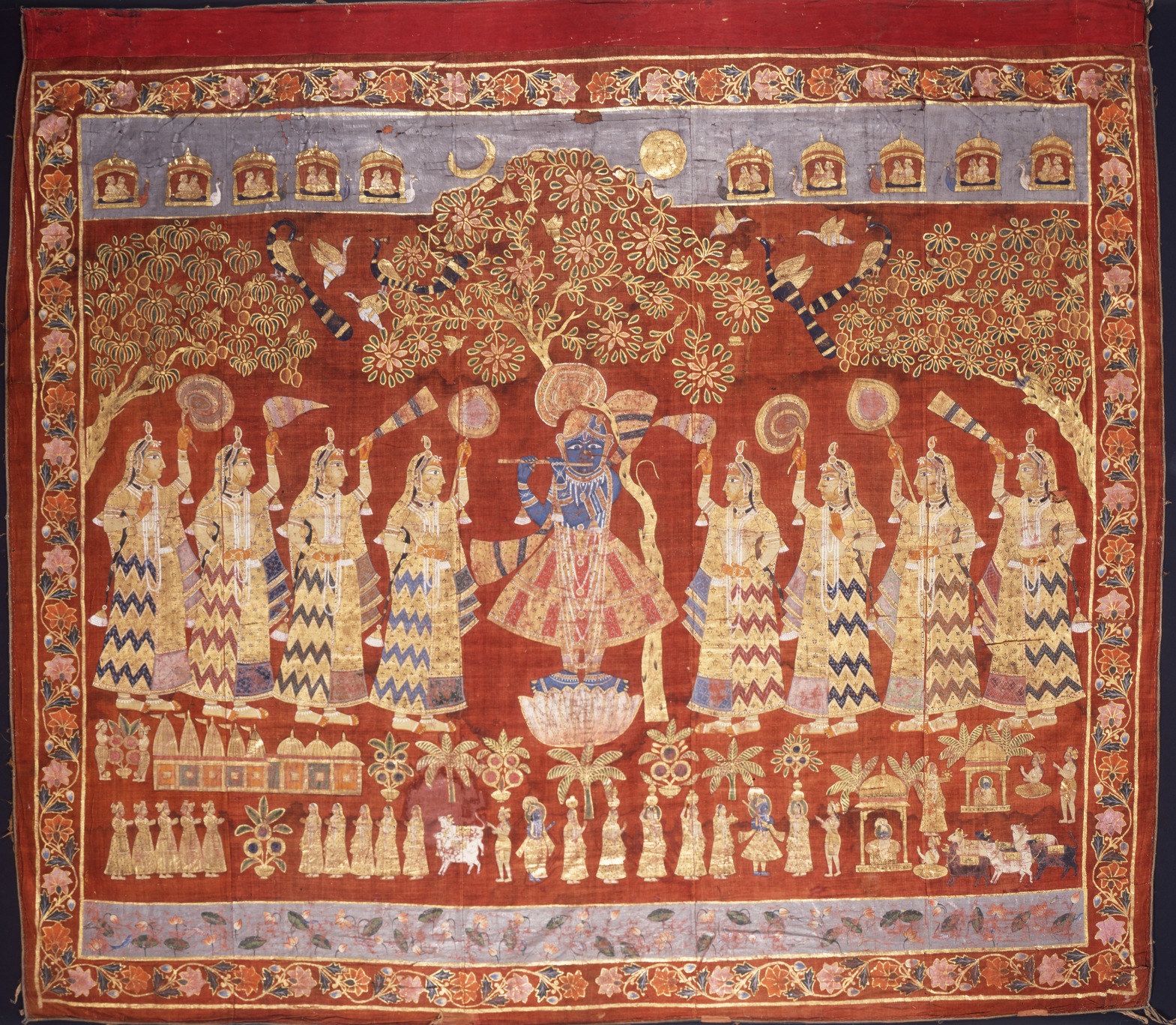Temple Hanging (Pichvai) Depicting Krishna with Gopis
(India, Nepal, and Tibet)
With his vivid blue body adorned in sumptuous silks and every manner of fine jewelry, the Hindu god Krishna plays his flute, mesmerizing every being that surrounds him. Trees bear fruit and flower, birds gather to hear the divine music, and gopis—the cowherding women of Vrindavan, where Krishna lives—adore him by waving flywhisks and fans. Some of the gopis also carry vessels filled with food and drink, for offering pleasing refreshments to the lord is an important part of the loving service ("seva") that devotees provide. Along the bottom of the painting, residents of Vrindavan (both human and bovine) go about daily life near the banks of the Yamuna River, some stopping at shrines to Krishna, where they offer him praise. In the sky above, divine couples ride in heavenly chariots led by birds.
Known as a "pichvai" (literally, “displayed at the back”), this cloth painting was made for a temple of the Pushtimarg sect to serve as a backdrop to a sculptural icon of Krishna, the focus of worship. Each Pushtimarg temple keeps several pichvais, since specific imagery is required for different festivals and periods of the ritual year.
Provenance
Provenance (from the French provenir, 'to come from/forth') is the chronology of the ownership, custody, or location of a historical object. Learn more about provenance at the Walters.
John and Berthe Ford, Baltimore [date and mode of acquisition unknown]; Walters Art Museum, 2001, by gift.
Exhibitions
| 2001-2003 | Desire and Devotion: Art from India, Nepal, and Tibet in the John and Berthe Ford Collection. The Walters Art Museum, Baltimore; Santa Barbara Museum of Art, Santa Barbara; Albuquerque Museum, Albuquerque; Birmingham Museum of Art, Birmingham; Hong Kong Museum of Art, Hong Kong. |
Geographies
India, Telangana
(Place of Origin)
India, Andhra Pradesh (Place of Origin)
Measurements
H: 106 11/16 × W: 118 1/2 in. (271 × 301 cm)
Credit Line
Gift of John and Berthe Ford, 2001
Location in Museum
Not on view
Accession Number
In libraries, galleries, museums, and archives, an accession number is a unique identifier assigned to each object in the collection.
In libraries, galleries, museums, and archives, an accession number is a unique identifier assigned to each object in the collection.
35.226


